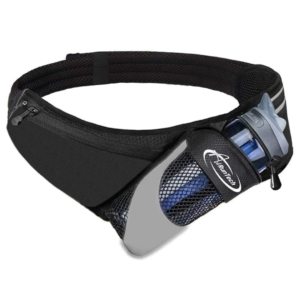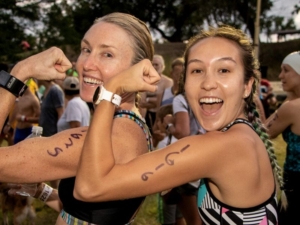Hydration is key to success in triathlon training. As you push your limits and prepare for the Kerrville Triathlon, it’s essential to find effective ways to carry water and stay hydrated throughout your workouts. Here are some valuable tips to help you stay on top of your hydration game:
Gear:
Invest in a hydration pack designed specifically for endurance athletes. These packs come with a water reservoir and a hose, allowing you to sip water conveniently without breaking your stride. They are ideal for long runs and bike rides, ensuring you have a steady supply of hydration at all times.
Attach a water bottle holder to your bike frame or your running belt. This way, you can carry a standard water bottle with you and access it easily during your training sessions. Opt for lightweight and durable bottles that are easy to grip while on the move.
If you prefer a hands-on approach, consider using handheld water bottles designed for runners. These bottles come with a strap that allows you to carry them comfortably without having to grip them tightly. They are convenient for shorter runs and provide quick access to water when needed.
Another option is a hydration belt that features multiple water bottles attached to a belt around your waist. These belts often come with additional pockets for storing essentials like energy gels or your phone. They are popular among triathletes for their convenience and capacity.
Be Prepared:
- Plan Your Routes: When training outdoors, plan your routes strategically to include water fountains or hydration stations along the way. Knowing where you can refill your water supply can alleviate the need to carry large amounts of water with you, especially on longer workouts.
- Electrolyte Solutions: In addition to water, consider using electrolyte solutions or sports drinks to replenish lost electrolytes during intense training sessions. These drinks can help maintain your body’s electrolyte balance and enhance hydration efficiency.
- Monitor Your Fluid Intake: Keep track of how much water you consume before, during, and after each training session. Monitoring your fluid intake helps you understand your hydration needs and adjust accordingly based on factors like weather conditions and workout intensity.
By implementing these tips and finding the right hydration strategy that works for you, you’ll ensure that staying hydrated becomes a seamless part of your triathlon training routine. Remember, proper hydration is not just about quenching your thirst—it’s about optimizing your performance and reaching your full potential on race day.
Stay hydrated, stay focused, and keep pushing towards your goals. See you at the Kerrville Triathlon finish line!






 Cycling. Cycling is built for fueling. You have bottle cages on your bike, the right choice in your race clothing will have pockets for holding gels and other forms of nutrition. There are also tons of other equipment you can add to your bike to pretty much carry as much as you want. One key is to use the
Cycling. Cycling is built for fueling. You have bottle cages on your bike, the right choice in your race clothing will have pockets for holding gels and other forms of nutrition. There are also tons of other equipment you can add to your bike to pretty much carry as much as you want. One key is to use the 